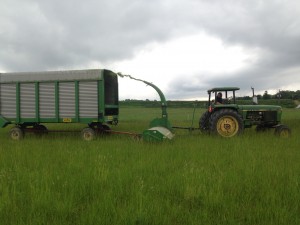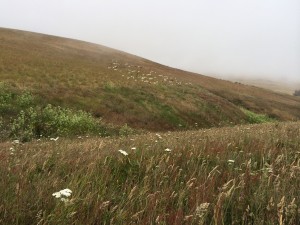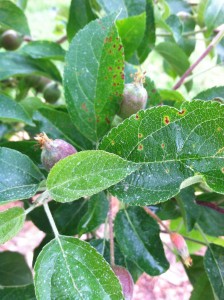Whoa, it has been a little longer than I would like since I last posted. I’ve been doing a lot of repetitive work, so there really isn’t too much to report. However, here are the highlights of the last two weeks:
 -Helped to dig a trench around the perimeter of a research plot
-Helped to dig a trench around the perimeter of a research plot
-Laid a chicken-wire fence in said trench (in the rain). Helpful pointer: Synchronized stomping on both sides to secure the fence solidly in the ground is key. It’s really a two person job.
-Helped plant over 3,200 lettuce and galinsoga seedlings (in the sun)
 -Weeded weeds (Talk about an existential crisis. When you’re planting weeds on purpose and weeding out unwanted weeds as well as soybeans from those plots…you begin to question life)
-Weeded weeds (Talk about an existential crisis. When you’re planting weeds on purpose and weeding out unwanted weeds as well as soybeans from those plots…you begin to question life)
-Marked hundreds of weed seedlings with toothpicks and thinned them using forceps. There’s really no comfortable way to sit and do that.
 I apologize for my dry humor. It’s not as bad as it all seems because I like working with my hands and being outside and I really have been learning a lot about research and post-grad work. Having an internship like this is helping me decide what kinds of careers I think I’ll want to pursue after graduation. And if you ever need someone to plant your lettuce or weed your garden, you know who to call.
I apologize for my dry humor. It’s not as bad as it all seems because I like working with my hands and being outside and I really have been learning a lot about research and post-grad work. Having an internship like this is helping me decide what kinds of careers I think I’ll want to pursue after graduation. And if you ever need someone to plant your lettuce or weed your garden, you know who to call.





















